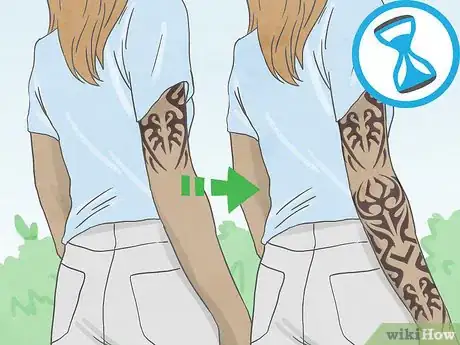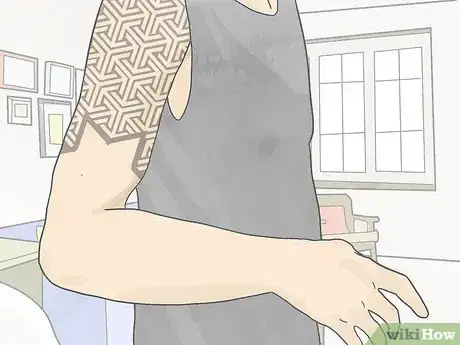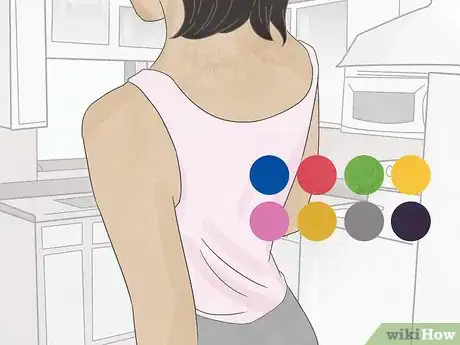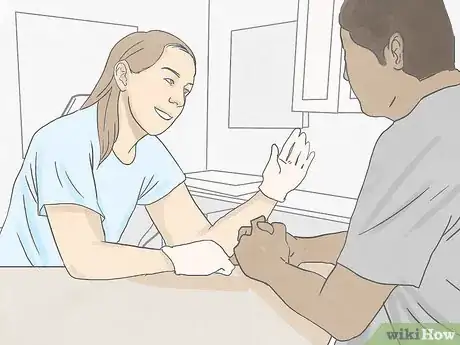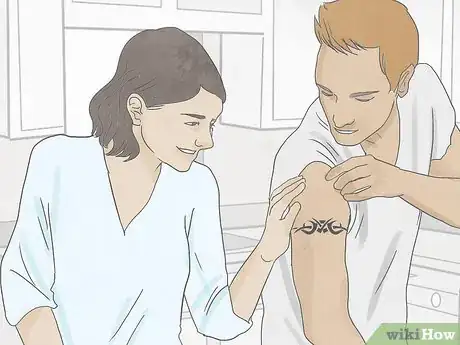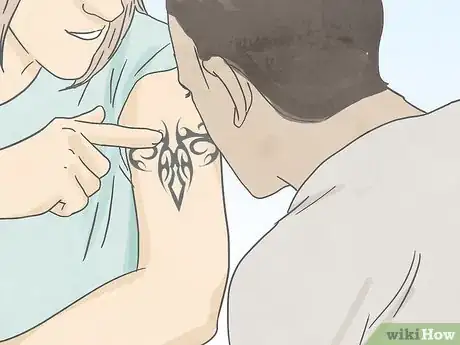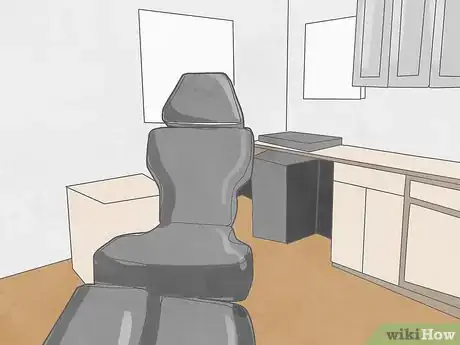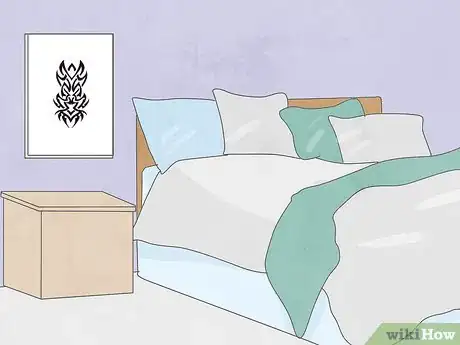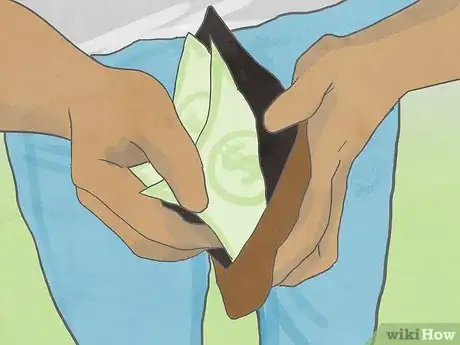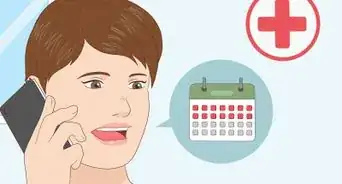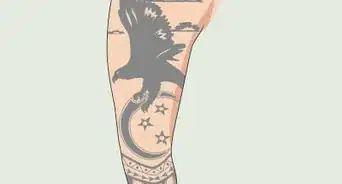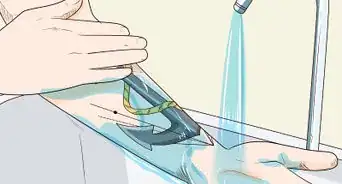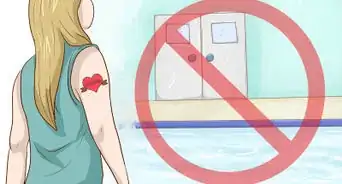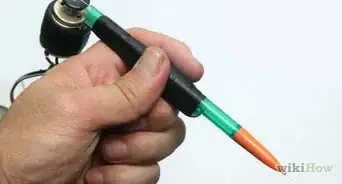This article was co-authored by Burak Moreno. Burak Moreno is a Professional Tattoo Artist with over 10 years of experience. Burak is based in New York City and is a tattoo artist for Fleur Noire Tattoo Parlour in Brooklyn. Born and raised in Istanbul, Turkey, he has worked as a tattoo artist throughout Europe. He works on many different styles but mostly does bold lines and strong color. You can find more of his tattoo designs on Instagram @burakmoreno.
There are 8 references cited in this article, which can be found at the bottom of the page.
This article has been viewed 70,093 times.
A well-planned sleeve tattoo is a treasured work of art composed of meaningful images, symbols, and words. Think of imagery that represents your values, interests, and significant life occasions. Design your sleeve with a good artist, and consult with them about motifs and colors that will lend continuity as you add new pieces to your sleeve over time. Ask your social circle for referrals to a reputable shop. Check their portfolios and social networks for quality and style, and be sure your potential artist uses sanitary practices. Before making a permanent modification to your body, make sure you’re ready to invest the time and money required to realize your work of art.
Steps
Designing a Sleeve Tattoo
-
1Think of images and symbols that matter most to you. Make a list of meaningful images, symbols, and words that could serve as potential components of your sleeve. Think of interests, values, and signs that you won’t regret having on your body in the future.[1]
- You can look for inspiration in tattoo magazines, like Inked (http://www.inkedmag.com/), or shops’ online portfolios. Keep in mind your sleeve will be a major investment of time and money, and it’ll have more meaning for you if you come up with your own imagery.
-
2Get your sleeve done in sessions. Sleeve tattoos typically cost hundreds or thousands of dollars and have such a level of detail that getting it done in one sitting is usually impossible. Ask your artist if you can do an entire sleeve at once or if you'll need to break it up into several sessions.
- Aim to use a single artist to complete the entire sleeve so there is continuity in the images and style.
EXPERT TIPBurak Moreno is a Professional Tattoo Artist with over 10 years of experience. Burak is based in New York City and is a tattoo artist for Fleur Noire Tattoo Parlour in Brooklyn. Born and raised in Istanbul, Turkey, he has worked as a tattoo artist throughout Europe. He works on many different styles but mostly does bold lines and strong color. You can find more of his tattoo designs on Instagram @burakmoreno.Tattoo Artist
 Burak Moreno
Burak Moreno
Tattoo ArtistOur Expert Agrees: If you want a sleeve tattoo, it's a good idea to get a smaller tattoo first to see if you can imagine having more tattoos in the same place. Also, work with a tattoo artist who specializes in sleeves—large-scale designs really need an experienced artist.
Advertisement -
3Choose patterns or motifs that will add continuity. Framing larger images with smaller patterns will lend a sense of composition to your sleeve. Work with your tattoo artist to incorporate the framing motif into your first sleeve tattoo and include it in later additions.[2]
- Examples could be your birth month’s flower or your favorite flower, vines and leaves, cloud patterns, stars, or waves. These elements can reappear throughout your sleeve and unify its other elements.
-
4Go with colors that are easily duplicated for consistency. Choose simple, basic colors that will resist fading and give your sleeve continuity. As you add to your sleeve over time, a unified color scheme will help it become a more intentional, cohesive work of art.[3]
- Ask your tattoo artist, “Can you suggest colors that are easy to replicate in tattoos I'll add to the sleeve in the future? I want to avoid having multiple shades that might clash or seem mismatched. Which color scheme would work best for my skin tone and fade the least?”
-
5Work with a tattoo artist to design your sleeve. A good tattoo artist will help you design your entire sleeve, even if you don't want to get it all done at once. Bring your list of tattoo ideas, which is called a brief, to the artist, and try to be as descriptive as possible in conveying your ideas. Ask the artist to sketch some designs, and consult with them about color, spacing, unifying motifs, and other compositional elements.[4]
- A good tattoo artist will take pleasure in helping you create a meaningful, unique design, so finding the right artist is vital to starting a sleeve tattoo.
Finding a Tattoo Artist
-
1Ask friends with tattoos for a referral. The first place to look for a good tattoo artist is your social circle. Word of mouth is often the best way to get clear, honest information about a shop.[5]
- If you have friends with tattoos you find beautiful, ask them, “What is the name of your tattoo artist? What was your experience with the artist like? Would you recommend them?”
-
2Check your friends’ tattoos for quality. You should only ask friends with quality tattoos for referrals. Ask if you can check out their piece, and take mental notes about its quality.[6]
- Assess the level of detail in the work. Look for clear, crisp, and thin lines. Check for pigment that’s faded or bled out, as if someone held a marker to a piece of paper for too long.
-
3Look through tattoo shops’ online presence. Once you have a few potential shops, check their websites and social media pages. Browse through their portfolios to get a better idea of their quality and style, and narrow your list to include the style or styles most consistent with your aesthetic.[7]
- While you’re checking websites and social media pages, look for comments, complaints, and reviews from past clients.
- Looking at portfolios and pictures of tattoos an artist has done can help you find one with the style you're looking for.
-
4Visit the shop and check for sanitary conditions. After checking shops out online, your next step is to visit in person. If it appears dingy, dirty, or unprofessional, find another shop.[8] Look for evidence of sanitary practices, such as:[9]
- Clean, well-organized workspace and tools.
- Tattoo needles still in sterile packaging and only opened in front of clients--the best shops use all disposable materials.
- Sterilizing equipment, such as an autoclave and chemical, steam, or ultrasonic cleaners.
- Artists sterilize all reusable items.
- Artists wash their hands, wear gloves, and cover surfaces with plastic (like the cords, machines, tablets, and chairs).
Deciding if You’re Ready
-
1Try hanging an image above your bed before getting it tattooed. Print out an image of the first potential element of your sleeve, such as a design drafted by your artist. Hang it next to your bed, above your alarm clock, on the refrigerator, or another location where you’ll see it multiple times a day. Keep the image posted for a few weeks before you decide to get it tattooed on your body.[10]
- If you can go a few weeks or a couple of months living with the image without getting sick of it, it’s more likely you’ll actually enjoy it being a permanent part of your body.
-
2Make sure a sleeve won't impact your job prospects. Before starting your sleeve, double check your job’s dress code and consider the clothing typically worn by people in your field of work. In general, companies across industries are more accepting of tattoos than they’ve been in the past.[11] However, it’s better to be on the safe side and make sure your new ink won’t have an impact on your present or future job prospects.[12]
- If you’re worried about the potential professional consequences of a large-scale tattoo, try starting on your upper arm and working toward half sleeve coverage.
- Alternatively, determine if you're dedicated enough to covering the tattoos every day.
-
3Start your sleeve when you’re ready to spend some money. If you’re eager to start your sleeve but have a limited budget, you might want to take the time to save up some money for a quality tattoo. Your work of art is a major investment and will be a permanent part of your body. Some full sleeves add up to thousands of dollars spent over the course of years, and it’ll be worth it in the long run to invest in quality artistry.[13]
- Depending on the size of your sleeve’s first piece, be prepared to spend at least $100 (U.S.) before tip. That amount will increase for larger pieces with finer details or more colors. As for gratuity, you should tip your artist 20%, especially if you intend on working with them on later additions.
- For a more accurate idea of how much starting your sleeve will cost, get a price quote from your artist when you begin discussing the first piece.
References
- ↑ https://tatring.com/tattoo-body-placement/Tattoo-Designs-Building-a-Sleeve-Piece-by-Piece
- ↑ https://tatring.com/tattoo-body-placement/Tattoo-Designs-Building-a-Sleeve-Piece-by-Piece
- ↑ https://tatring.com/tattoo-body-placement/Tattoo-Designs-Building-a-Sleeve-Piece-by-Piece
- ↑ http://darkdesigngraphics.co.uk/tattoo-designs/half-sleeve-tattoo-design/
- ↑ https://tatring.com/getting-tattooed/How-to-Find-a-Good-Tattoo-Artist-Anywhere-in-the-World
- ↑ http://www.slate.com/blogs/quora/2015/02/22/tattoos_how_to_tell_a_good_tattoo_artist_from_a_bad_one.html
- ↑ https://tatring.com/getting-tattooed/How-to-Find-a-Good-Tattoo-Artist-Anywhere-in-the-World
- ↑ http://www.slate.com/blogs/quora/2015/02/22/tattoos_how_to_tell_a_good_tattoo_artist_from_a_bad_one.html
- ↑ https://tatring.com/getting-tattooed/How-to-Find-a-Good-Tattoo-Artist-Anywhere-in-the-World
- ↑ http://galadarling.com/article/how-to-get-a-great-tattoo-and-never-regret-it/
- ↑ https://www.forbes.com/sites/rachelhennessey/2013/02/27/having-a-tattoo-and-a-job/#8f584416dc63
- ↑ https://psychcentral.com/lib/thinking-of-inking-the-possible-impact-of-tattoos-on-your-job-search/
- ↑ https://ww2.kqed.org/arts/2012/08/11/11-steps-to-getting-a-tattoo-you-wont-regret-for-the-rest-of-your-life/
About This Article
To start a sleeve tattoo, think about what kind of images and symbols you’re drawn to. Maybe you love wildlife and you want a sleeve of animals, or maybe you want to dedicate one of your arms to pop art. It’s generally a good idea to maintain some consistency across your sleeve, whether it’s the art style, the theme, or the tattooist themselves. It would be very exhausting and expensive to get your whole sleeve done at once, so you’ll want to get inked one piece at a time. Start with tattoos you don’t mind being on their own for a few months until you can get more pieces added. For more tips from our Tattooing co-author, including how to choose a reputable and talented tattoo artist, read on!

